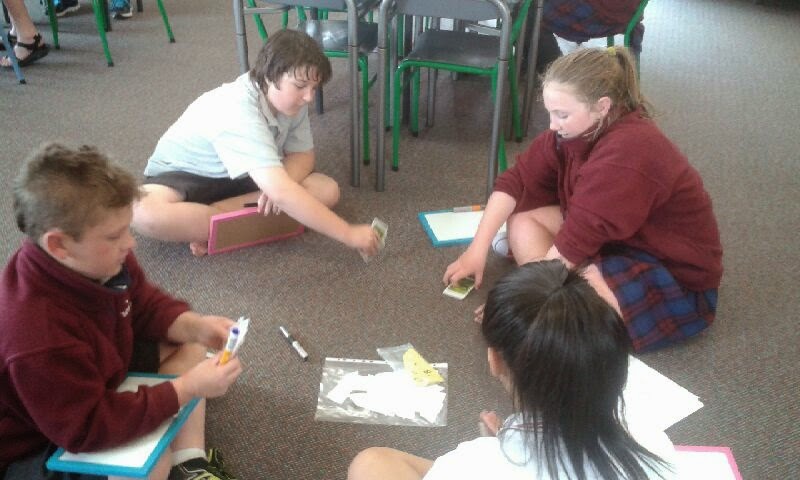As part of our dome project we have been learning about pi - watch the following at the Wonderopolis
Finding Pi Yourself
Draw a circle, or use something circular like a plate.
Measure around the edge (the circumference):

I got 82 cm
Measure across the circle (the diameter):

I got 26 cm
Divide:
82 cm / 26 cm = 3.1538...
That is pretty close to π. Maybe if I measured more accurately?
Digits
In fact π is approximately equal to:
3.14159265358979323846…
The digits go on and on with no pattern. π has been calculated to over two quadrillion decimal places and still there is no pattern to the digits
Approximation
A quick and easy approximation for π is 22/7
22/7 = 3.1428571...
But as you can see, 22/7 is not exactly right. In fact π is not equal to the ratio of any two numbers, which makes it an irrational number.
A better approximation (but still not exact) is:
355/113 = 3.1415929...
(think "113355", then divide the "355" by the "113")
(think "113355", then divide the "355" by the "113")
Remembering The Digits
I usually just remember "3.14159", but you can also count the letters of:
"May I have a large container of butter today"
3 1 4 1 5 9 2 6 5
3 1 4 1 5 9 2 6 5
To 100 Decimal Places
Here is π with the first 100 decimal places:
| 3.14159265358979323846264338327950288 4197169399375105820974944592307816 4062862089986280348253421170679... |
Calculating Pi Yourself
There are many special methods used to calculate π and here is one you can try yourself: it is called the Nilakantha series (after an Indian mathematician who lived in the years 1444–1544).It goes on for ever and has this pattern:
3 + 42×3×4 − 44×5×6 + 46×7×8 − 48×9×10 + ...
(Notice the + and − pattern, and also the pattern of numbers below the lines.)It gives these results:
| Term | Result (to 12 decimals) |
|---|---|
| 1 | 3 |
| 2 | 3.166666666667 |
| 3 | 3.133333333333 |
| 4 | 3.145238095238 |
| ... | ... etc! ... |
Pi Day
Pi Day is celebrated on March 14. March is the 3rd month, so it looks like 3/14
Place Value - Parody Shake it Off
Adding Fractions
Follow these steps
Subtracting Fractions
Multiplying Fractions
Ratios
Proportions
Fractions, percentages and ratios and proportions in everyday use - watch the videos and then choose a level.
Addition of Decimals
Calculating Percentages
Follow these steps
What are percentages? and Finding a percent of a number.
Algebra Manipulatives
Maths Learning in Hoiho Class - Sharing the knowledge.
Percentage Game
Have some fun using percentages, decimals and fractions when you plan a park. Follow the instructions at the following link.
Factorising
Order of Operations
Algebra
Introduction
Measurement
Converting Units
Division
Follow these steps and work your way through the questions
Length - We are learning to
- describe a method to measure the length of circular objects
- measure length using metres, centimeters and millimeters
- calculate the circumference of a circle from a measurement of diameter
Our focus this week is to use thermometers to
measure temperature in degrees Celsius and investigate factors that
influence temperatures
Visit the following links this week to help you understand our learning outcomes
Negative Numbers
click on the link and play the game
Mathletics is now working. Please select Integers or Decimals if this is your groups learning focus.
Watch these you tube clips on integers (negative numbers)
Check out this catchy song to help you understand place value and decimals.






















I LOVE MATH!!!!!!!
ReplyDeleteMath is fun but also frustrating!!!
ReplyDeleteFinally Fractions!
ReplyDelete